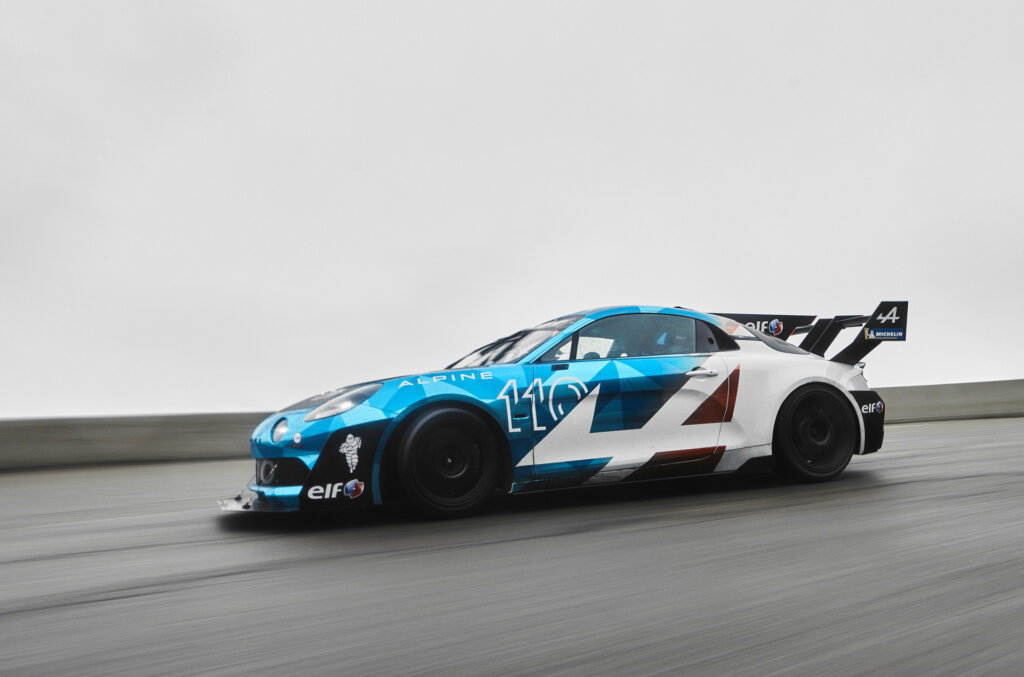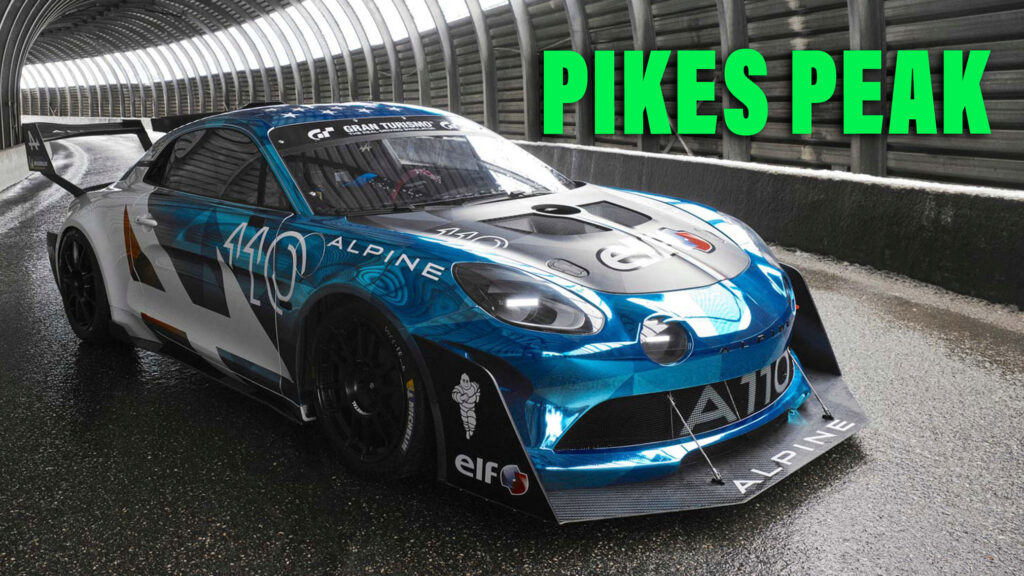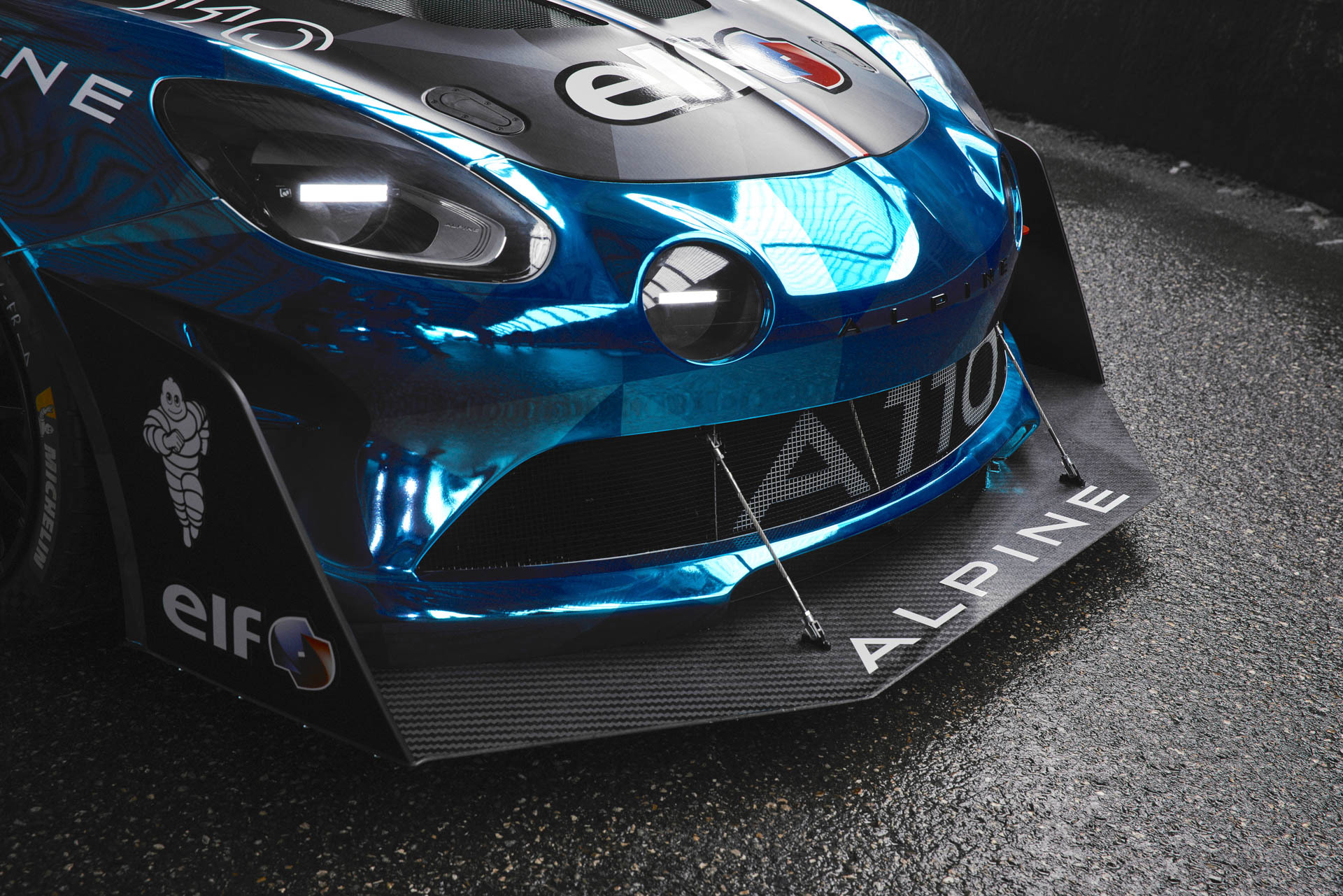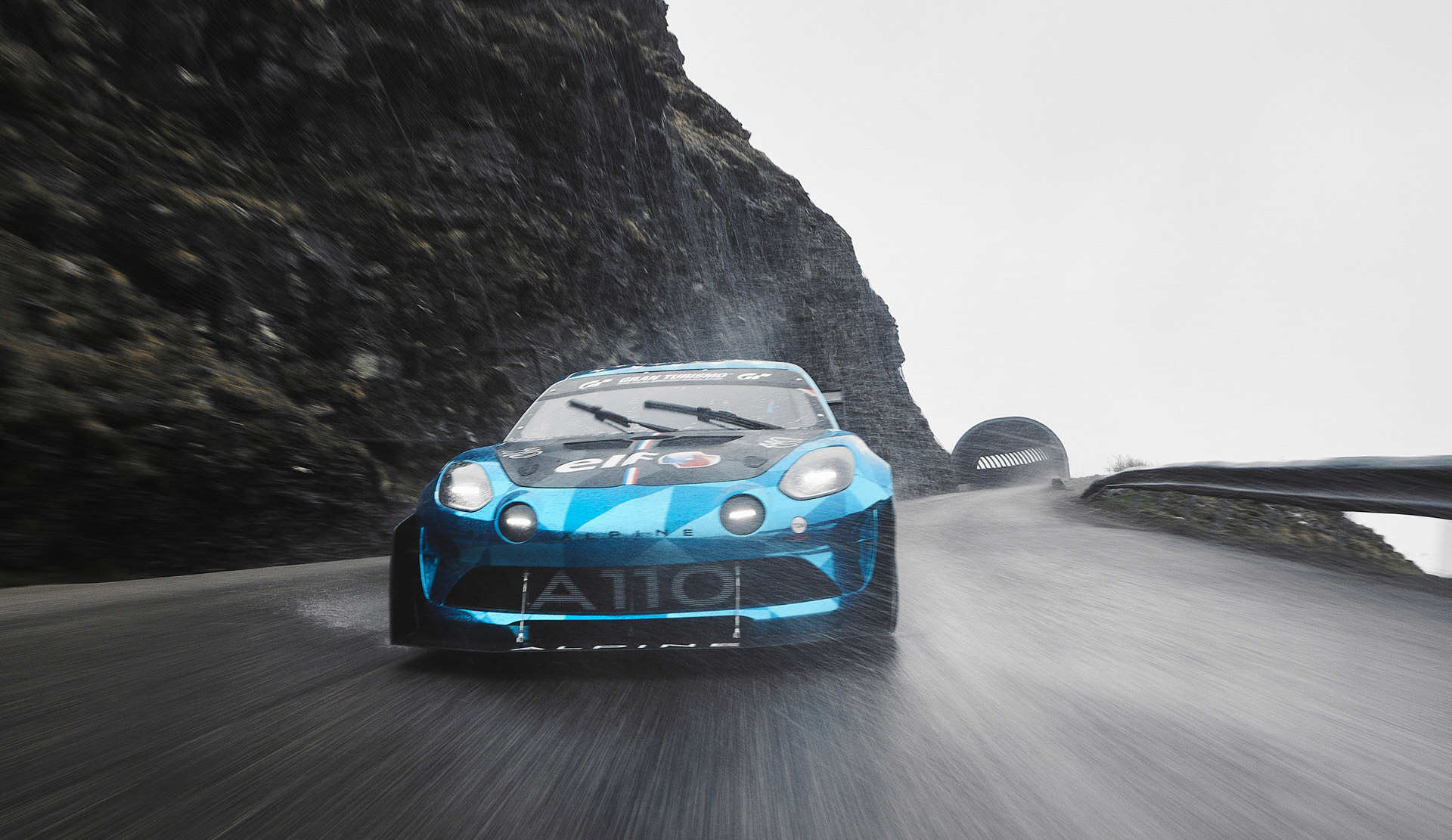Alpine is getting ready to load its A110 Pikes Peak racer onto an airplane for the trip to Colorado that will end up with it making another rapid ascent from sea level. But before any of that happens the car has been put through its paces on mountain roads closer to (Alpine’s) home in conditions that look much tougher than what the A110 can expect in the U.S.
We’ve already seen realistic official renderings of the Pikes Peak racer, but these new images give us our first chance to see the real car on real roads. And if anything, the A110 looks even tougher in the flesh, its matte black hood and huge carbon splitter contrasting starkly with the white cloud-filled sky and the blue paint on the nose, which is arguably the least crazy end of the car.
The blue paint on the front end and roof transitions into white via a giant ‘A’ logo on the door, that white section wrapping around a tail topped by a gigantic two-piece carbon spoiler that looms over more carbon aero devices below and to the sides of the rear bumper.
Alpine started the project with an A110 GT4 Evo customer race car, which, at 2,380 lbs (1,080 kg), is already very light. But that has been trimmed to just 2,094 lbs (950 kg) in Pikes Peak form, while the 493 hp (500 PS) 1.8-liter engine makes almost twice as much power as a 297 hp (300 PS) A110 road car and has been optimized to work at high altitudes.
Related: Radford’s Featherweight Type 62-2 Pikes Peak Edition To Conquer The Mountain With 700 HP

“With a start at an altitude of 2,800 m (9,186 ft) and a finish at 4,400 m (14,436 ft) the demands on the power supply are huge, as we lose 100 millibars of pressure as soon as we climb 1,000 m (3,281 ft),” explains project manager, Francois Letort. “The aim was to keep the same amount of power input throughout the climb without going overboard.”
The car will be driven by Alpine A110 Rally driver Raphael Astier, who already holds a Pikes Peak Time Attack 1 class record and had a chance to get behind the wheel during the recent test sessions in the Alps.
“The first runs went very well,” he said of the experience. “We tested for three days in France, and the results were extremely positive. The car is very agile and easy to drive. The chassis sticks to the ground, the engine looks promising, and the weight loss makes the Alpine even more dynamic than it already is naturally. It feels very light and responsive, with very direct steering and no delays in shifting. We now need to confirm this good feeling on other roads and heights, but our debut has been more than positive, and I am confident.”
Astier claimed that an win is not the target of the project, but some silverware would certainly help with the marketing push for Alpine’s potential entry to the North American market with its new generation of electric cars.













